Particle Probability Hypothesis Density Filter Based on Pairwise Markov Chains
Abstract
1. Introduction
2. PHD Filter Based on the PMC Model
2.1. PMC Model
2.2. PHD Filter Based on PMC Model
3. PF-PMC-PHD Filter
4. Experimental Simulation
4.1. A Particular Class of Gaussian PMC Model
4.2. Performance Analysis
5. Conclusions
Author Contributions
Funding
Conflicts of Interest
References
- Mahler, R. An Introduction to Multisource-Multitarget Statistics and Its Applications; Technical Monograph for Lockheed Martin: Eagan, MN, USA, 2000. [Google Scholar]
- Mahler, R.P. Statistical Multisource-Multitarget Information Fusion; Artech House, Inc.: Norwood, MA, USA, 2007. [Google Scholar]
- Mahler, R.P. Multitarget Bayes Filtering via First-Order Multitarget Moments. IEEE Trans. Aerosp. Electron. Syst. 2003, 39, 1152–1178. [Google Scholar] [CrossRef]
- Vo, B.N.; Singh, S.; Doucet, A. Sequential Monte Carlo methods for multi-target filtering with random finite sets. IEEE Trans. Aerosp. Electron. Syst. 2005, 41, 1224–1245. [Google Scholar]
- Gao, Y.; Jiang, D.; Liu, M. Particle-gating SMC-PHD Filter. Signal Process. 2017, 130, 64–73. [Google Scholar] [CrossRef]
- Vo, B.N.; Ma, W.K. The Gaussian mixture probability hypothesis density filter. IEEE Trans. Signal Process. 2006, 54, 4091–4104. [Google Scholar] [CrossRef]
- Yang, J.; Li, P.; Yang, L.; Ge, H. An Improved ET-GM-PHD Filter for Multiple Closely-spaced Extended Target Tracking. Int. J. Control Autom. Syst. 2017, 15, 468–472. [Google Scholar] [CrossRef]
- Pieczynski, W. Pairwise Markov chains and Bayesian unsupervised fusion. In Proceedings of the International Conference on Information Fusion, Paris, France, 10–13 July 2000. [Google Scholar]
- Derrode, S.; Pieczynski, W. Signal and image segmentation using pairwise Markov chains. IEEE Trans. Signal Process. 2004, 52, 2477–2489. [Google Scholar] [CrossRef]
- Pieczynski, W. Pairwise Markov chains. IEEE Trans. Pattern Anal. Mach. Intell. 2003, 25, 634–639. [Google Scholar] [CrossRef]
- Petetin, Y.; Desbouvries, F. Bayesian multi-object filtering for pairwise Markovchains. IEEE Trans. Signal Process. 2013, 61, 4481–4490. [Google Scholar] [CrossRef]
- Mahler, R. Tracking targets with pairwise-Markov dynamics. In Proceedings of the International Conference on Information Fusion, Washington, DC, USA, 6–9 July 2015; pp. 280–286. [Google Scholar]
- Schuhmacher, D.; Vo, B.-T.; Vo, B.-N. A consistent metric for performance evaluation of multi-object filters. IEEE Trans. Signal Process. 2008, 56, 3447–3457. [Google Scholar] [CrossRef]
- Martino, L.; Read, J.; Elvira, V.; Louzadaa, F. Cooperative parallel particle filters for on-line model selection and applications to urban mobility. Digit. Signal Process. 2017, 60, 172–185. [Google Scholar] [CrossRef]
- Drovandi, C.C.; McGree, J.; Pettitt, A.N. A sequential Monte Carlo algorithm to incorporate model uncertainty in Bayesian sequential design. J. Comput. Graph. Stat. 2014, 23, 3–24. [Google Scholar] [CrossRef]
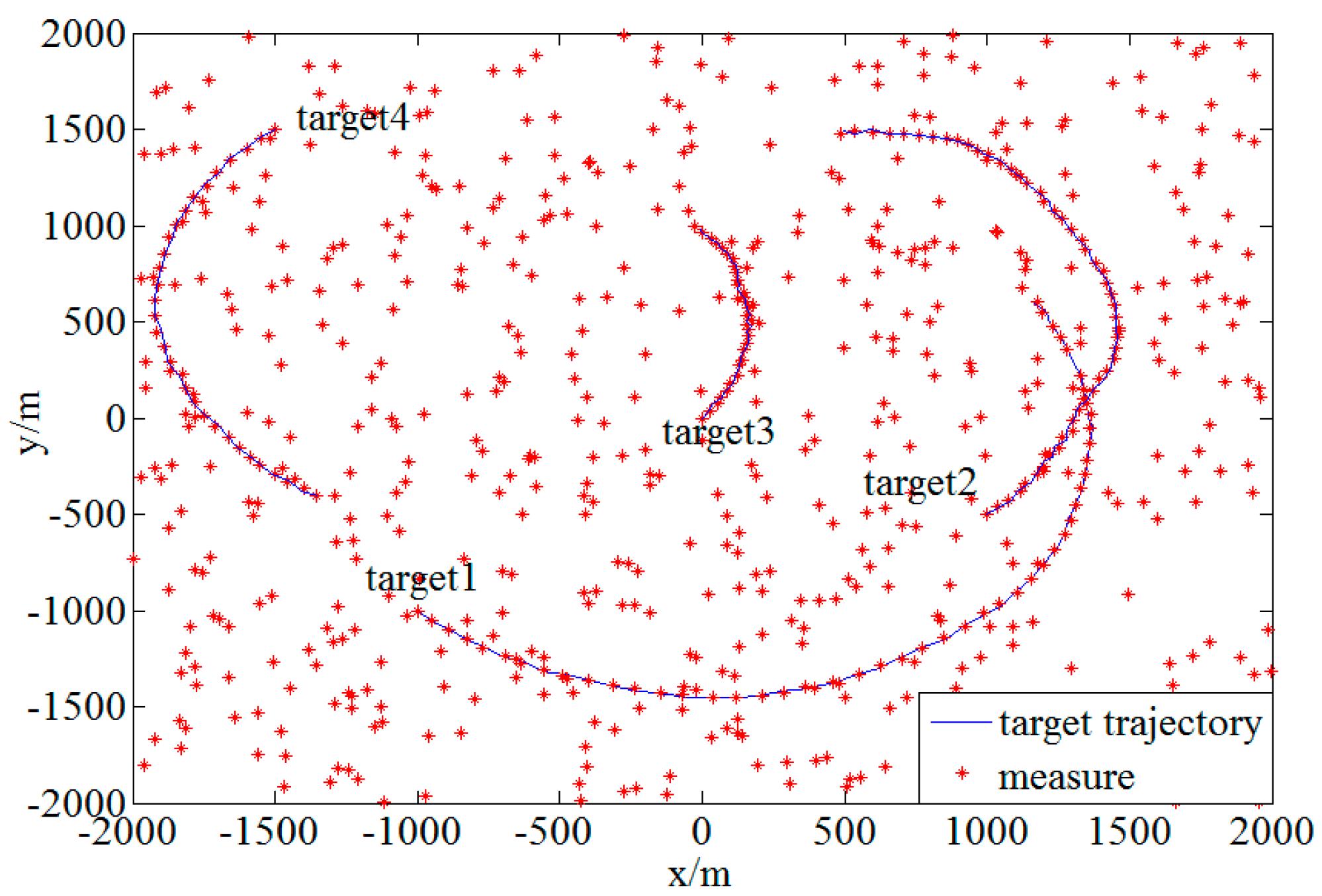
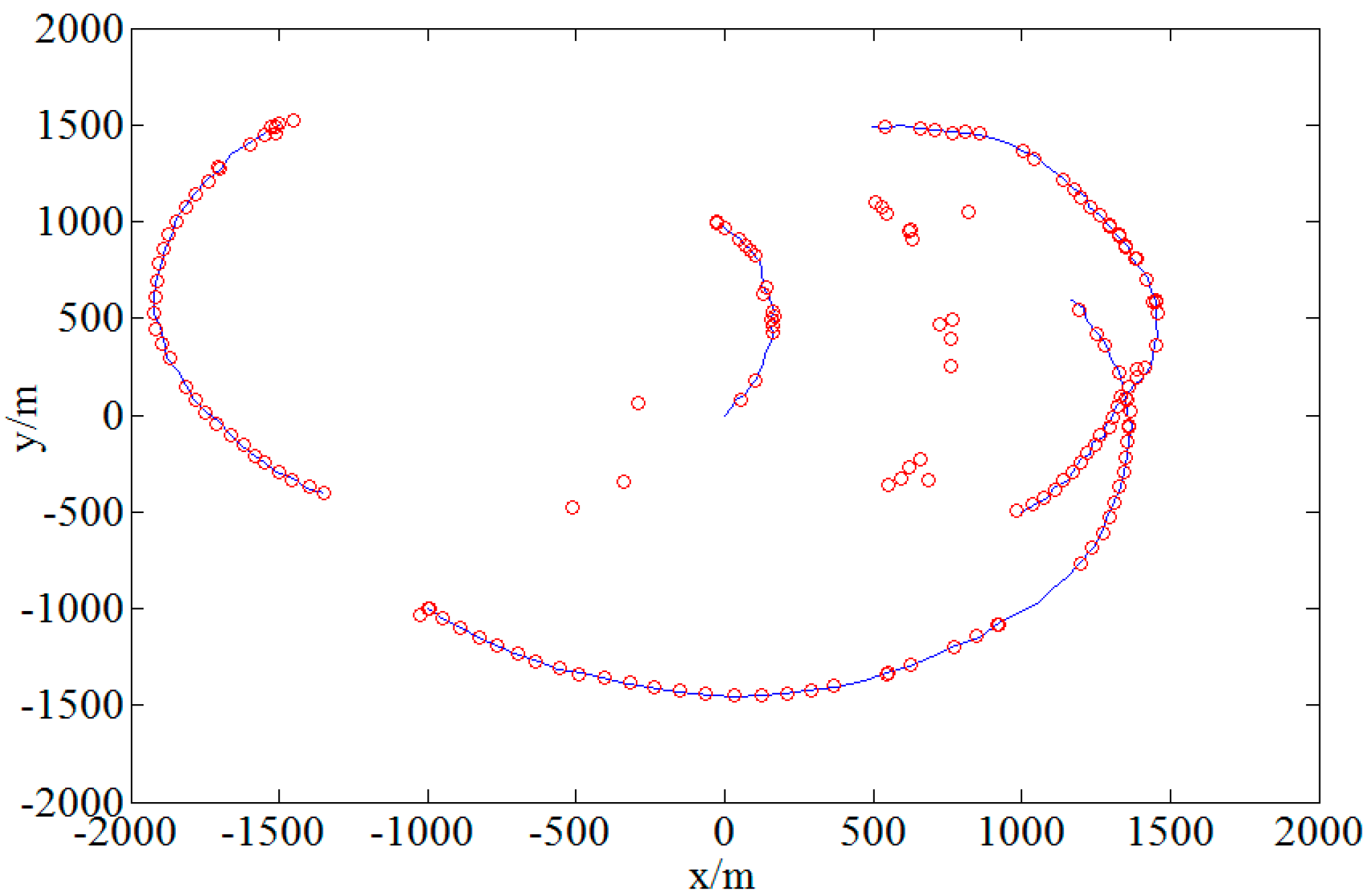
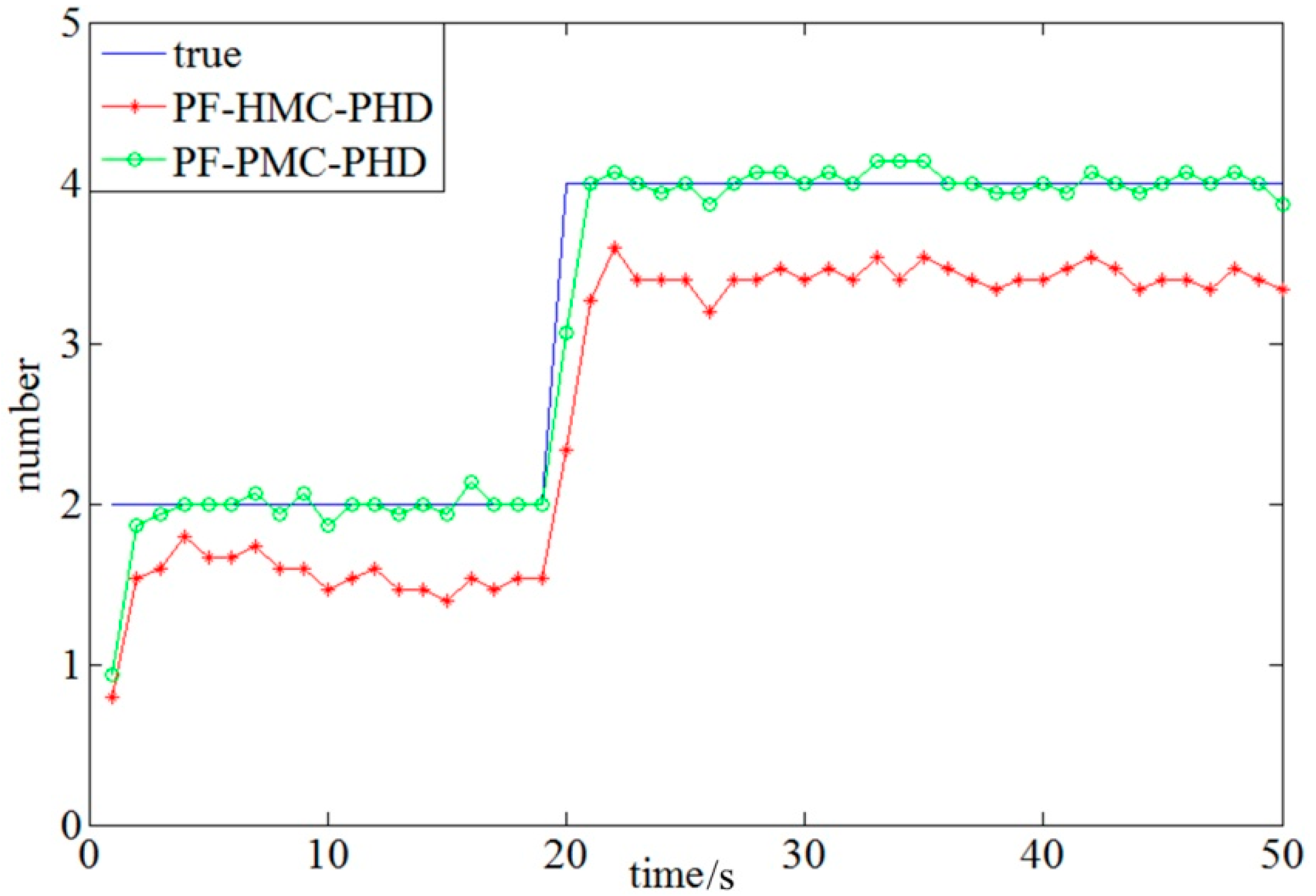
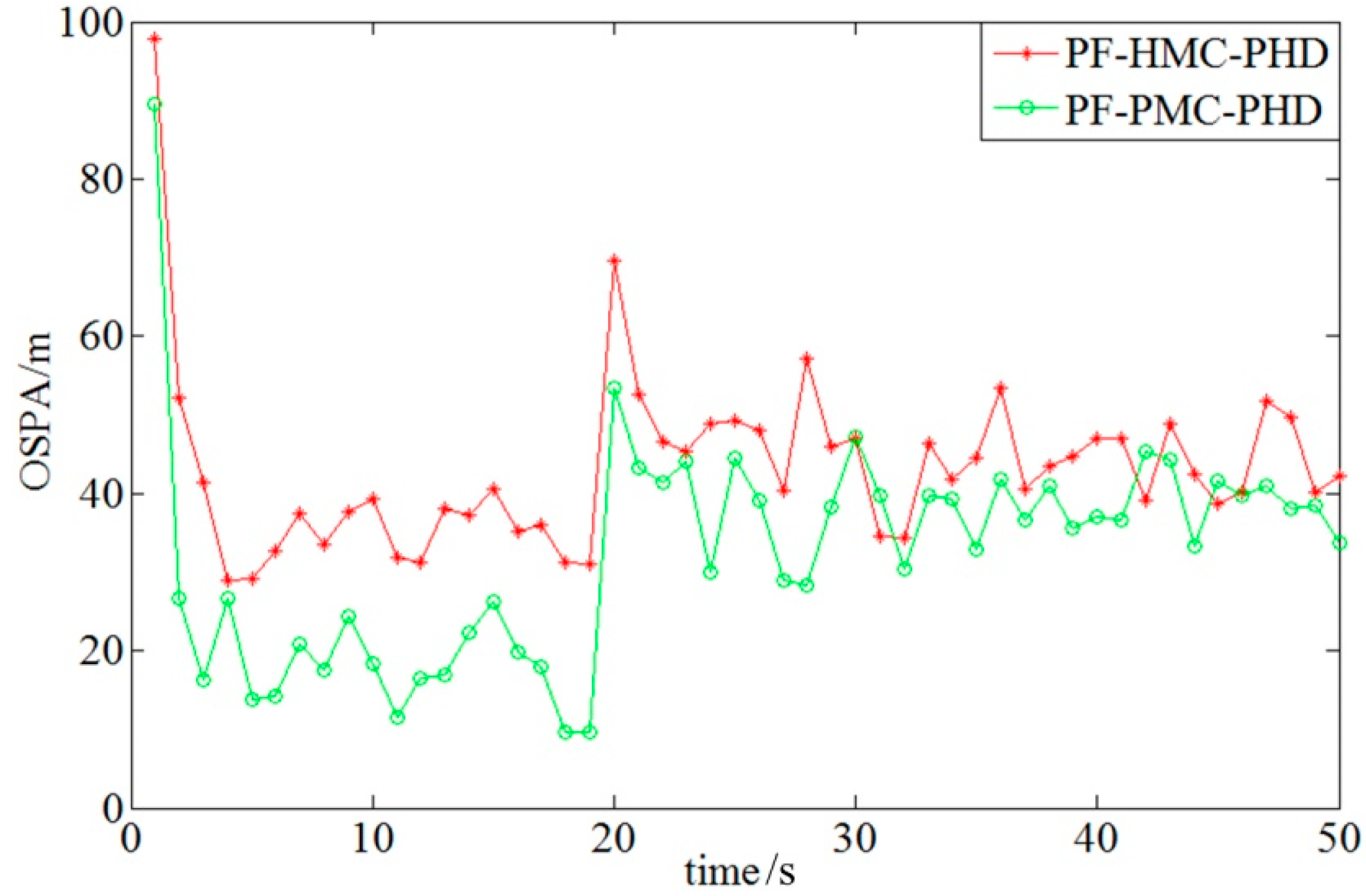
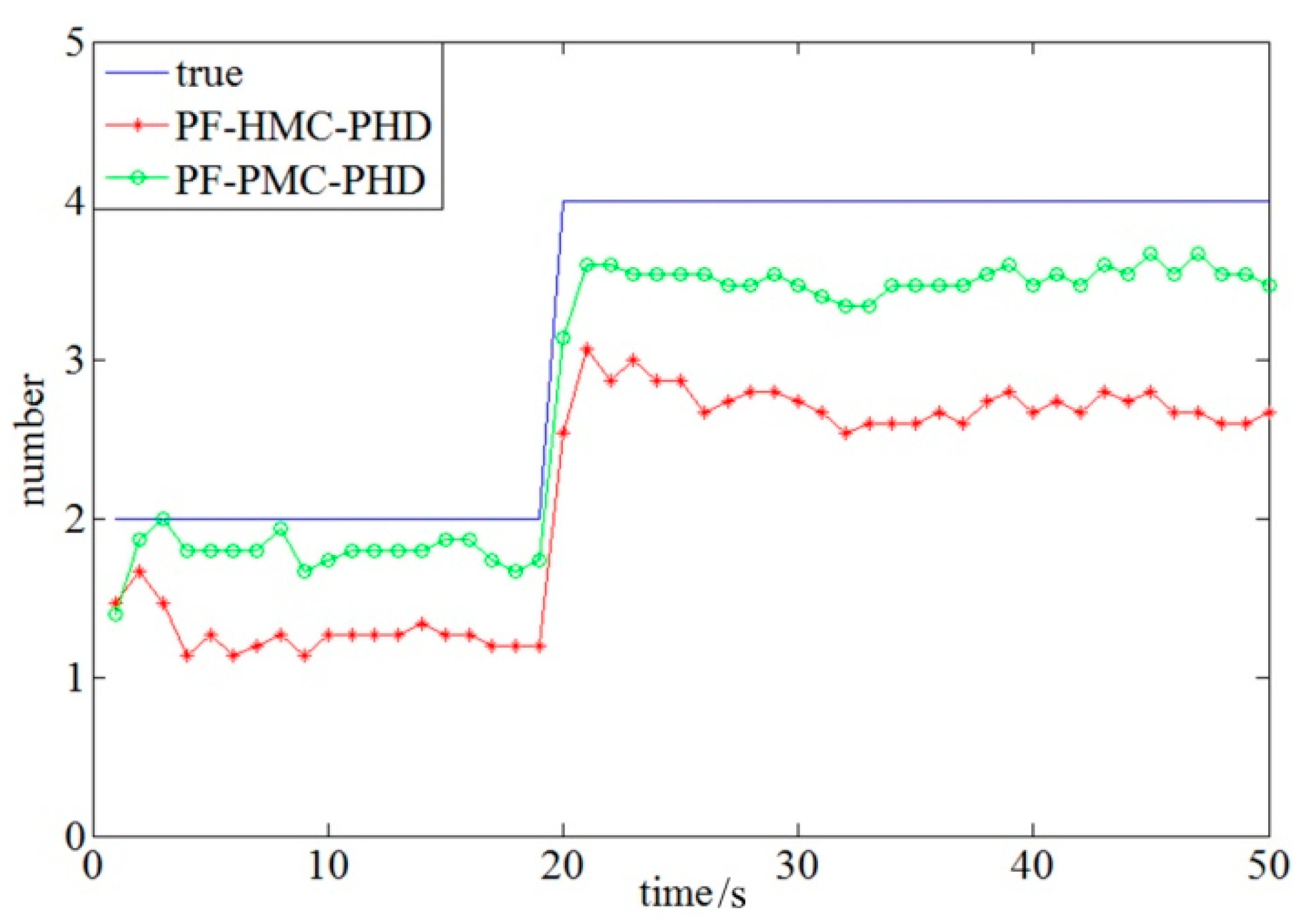
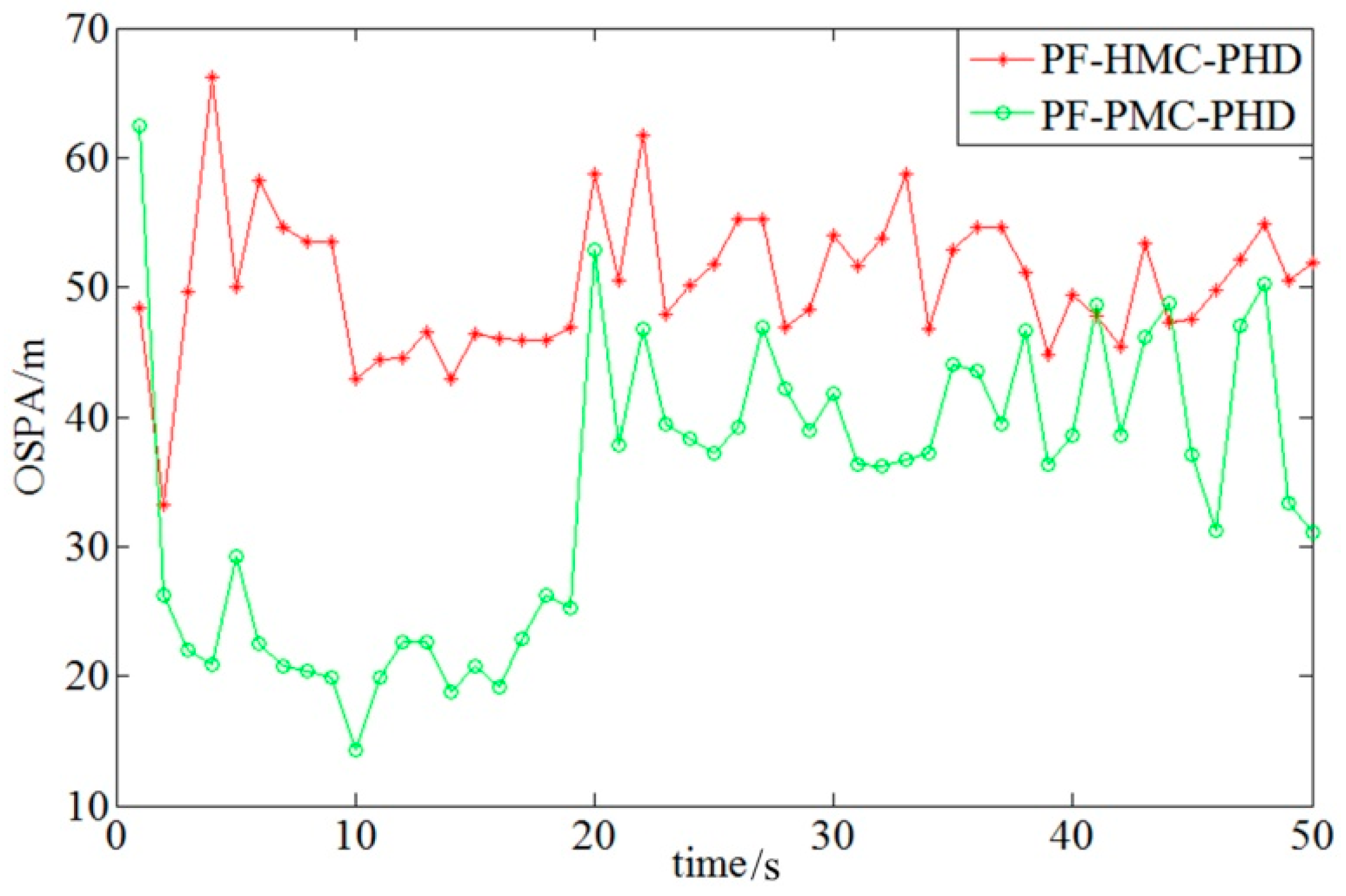
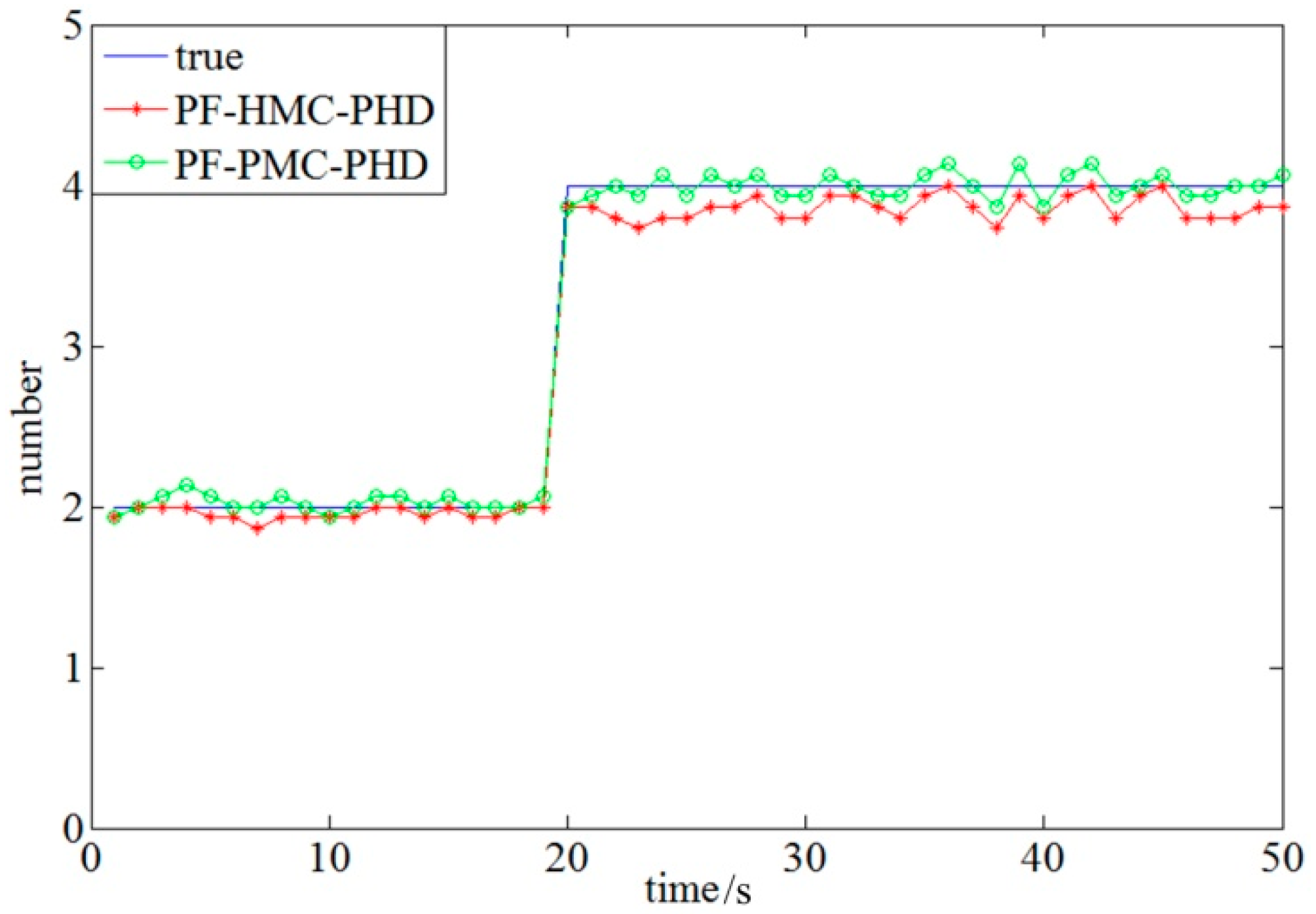
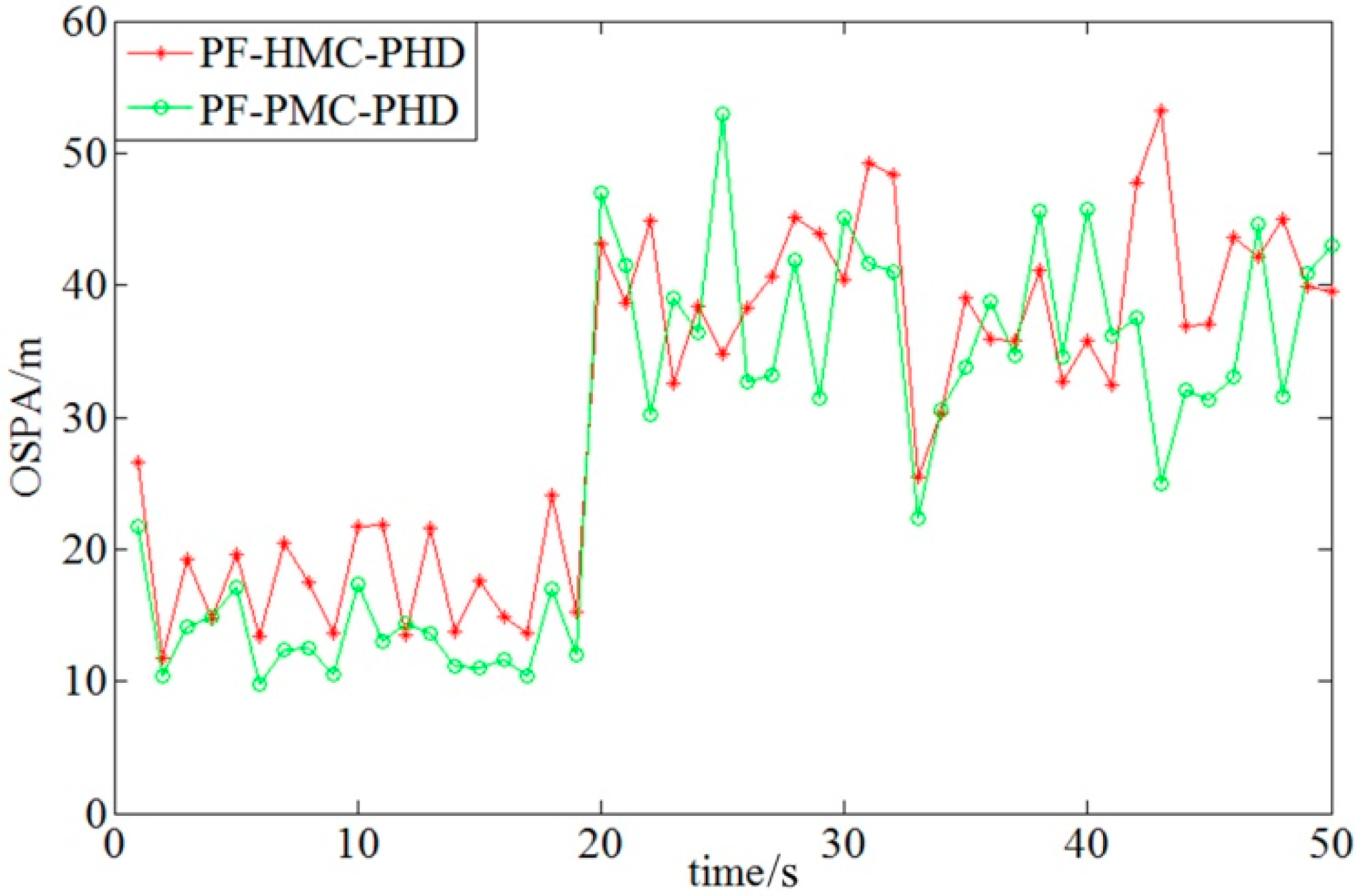
© 2019 by the authors. Licensee MDPI, Basel, Switzerland. This article is an open access article distributed under the terms and conditions of the Creative Commons Attribution (CC BY) license (http://creativecommons.org/licenses/by/4.0/).
Share and Cite
Liu, J.; Wang, C.; Wang, W.; Li, Z. Particle Probability Hypothesis Density Filter Based on Pairwise Markov Chains. Algorithms 2019, 12, 31. https://doi.org/10.3390/a12020031
Liu J, Wang C, Wang W, Li Z. Particle Probability Hypothesis Density Filter Based on Pairwise Markov Chains. Algorithms. 2019; 12(2):31. https://doi.org/10.3390/a12020031
Chicago/Turabian StyleLiu, Jiangyi, Chunping Wang, Wei Wang, and Zheng Li. 2019. "Particle Probability Hypothesis Density Filter Based on Pairwise Markov Chains" Algorithms 12, no. 2: 31. https://doi.org/10.3390/a12020031
APA StyleLiu, J., Wang, C., Wang, W., & Li, Z. (2019). Particle Probability Hypothesis Density Filter Based on Pairwise Markov Chains. Algorithms, 12(2), 31. https://doi.org/10.3390/a12020031



